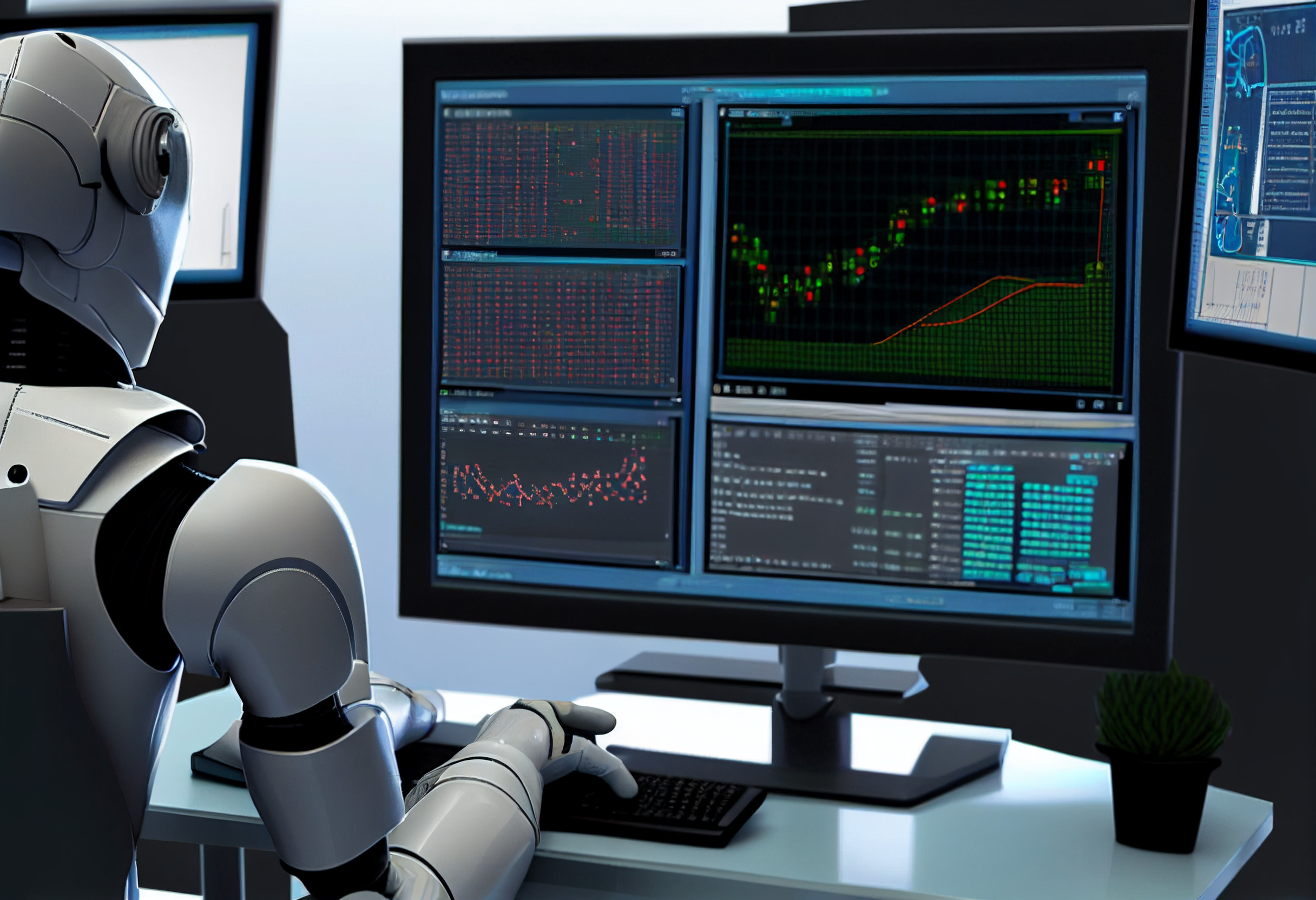
Since the rise of ChatGPT, artificial intelligence (AI) is becoming more prominent in playing a large role in a number of industries including the financial world.
While it has been long known that AI is revolutionizing crypto trading, NASDAQ reported that about 50% of stock trading volume in the United States is conducted through the use of computer-mediated algorithms, also known as high frequency trading (HFT).
High Frequency Trading Explained
High frequency trading is a method of trading that uses computer algorithms to transact large amounts of orders in significantly short amounts of time.
These algorithms analyze a number of markets and execute orders based on market conditions. They use advanced technology, low-latency networks and direct market access to gain a competitive advantage in the traditional trading world.
Tae Hwan Jo, the CEO and founder of BigShort, a real-time market insights platform, told Business2Community that the strategies executed by high frequency trading are “generally too fast for humans to reliably and profitably execute themselves”.
“This is distinct from automated trading which refers to strategies that remove the necessity of a human being but do not necessarily require the speed of a computer and thus could theoretically be executed by a human being glued to the screen every day while drinking a lot of coffee.”
In high frequency trading, profits are made through the buying and selling of financial instruments like stocks, currencies and derivatives.
High Frequency Trading Pros and Cons
One of the biggest advantages of high frequency trading is that algorithms can execute trading strategies much quicker than humans can, Jo explained. This means that such algorithms have also the opportunity to evolve.
“For example, algorithms are much more adept at quickly responding to arbitrage opportunities or quickly responding to news/sentiment via natural language processing (NLP) analysis. These are examples of things that used to be done by humans who have now been supplanted by algos. But order interception and rebate maximization strategies are examples of things which humans could never do because they occur on a time scale that was never available to human traders.”
In addition, high frequency trading can also contribute to higher liquidity in financial markets, lead to faster price discoveries and reducing information disparities in the market as well as increasing market participation and contribute to market efficiency.
On the other hand, however, it is important to note that high frequency trading is an execution of pre-programmed strategies that do not require a physical person to take the lead.
Jo noted:
“The strategies employed by HFT can be somewhat dynamic in a crude sense, but with the current state of AI, there is no way that an algo can adapt to an unforeseen situation or identify certain patterns or understand the world as well as a human can. This will change once Artificial General Intelligence (AGI) is achieved.”
Would You Trust an Algorithms with Your Trades?
High frequency trading is highly reliant on algorithms, which could come in handy, due to their rapid execution of orders in short periods of time, something human traders cannot achieve.
In addition, such algorithms process and advantage by being less emotional and more methodical, eliminating the impact of human emotions on trades.
However, Jo highlighted that this also comes with a caveat:
“If there’s a bug in the algo or it has not been programmed in a way that accounts for changing market conditions, then an HFT firm can very easily become bankrupt due to trades that a human would never make.”
On the other hand, the transaction level that these algorithms provide does result in better pricing for individual traders, especially if they are buying or selling smaller lost. At the same time, Jo noted that the “trade-off” is that this could result in greater systemic fragility and fat tail volatility.
And meanwhile high frequency trading could serve as a great helping had when it comes to executing orders, Jo said that it might never be able to truly focus on “human interest”, since social sentiment analysis is a key aspect in trading.
“A big picture way to think about it is that the more you remove humans from markets via technology such as HFTs, Robo Advisers, and things like automatic ETF rebalancings, the less markets reflect actual human interest. Human interest is inherently emotional and it’s not easy to create technology that perfectly reflects and caters to our emotional interests.”
Related Articles
- AI Adoption Still Has A Long Way to Go in Crypto Trading – Here’s How to Get Ahead With the Best AI Trading Tools
- Best Stock Picking Services & Websites in 2023
- Tech Giants Pledge AI Safety: But Who Governs the Governors?
What's the Best Crypto to Buy Now?
- B2C Listed the Top Rated Cryptocurrencies for 2023
- Get Early Access to Presales & Private Sales
- KYC Verified & Audited, Public Teams
- Most Voted for Tokens on CoinSniper
- Upcoming Listings on Exchanges, NFT Drops